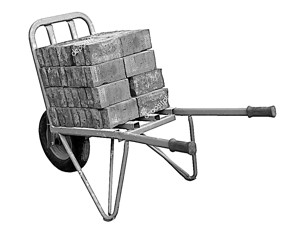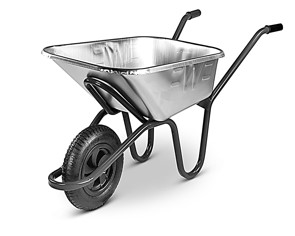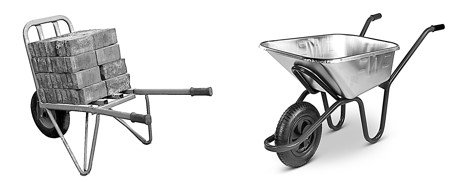[The failure to launch yesterday of Baidu’s (9888) Hong Kong IPO is a clear sign all’s not well with the China new-economy speculative complex. With Meituan (3690), Pinduodo (PDD) and NIO (NIO) all now over 30% lower than recent highs and Alibaba (9988) and JD.com (9618) over 20% off their peaks (to finger merely the tip of the speculative iceberg now melting) I thought it time for some plain-spoken wisdom. Many of yesterday’s heroes will never recover previous peaks and my homily below, in the simplest terms I hope, explains why.]
‘Value’, versus ‘growth’ investing is better described as the difference between a commonsensical and a speculative approach.
To demonstrate the two, and how the commonsensical approach always works out, I imagined the example of bricks and wheelbarrows below.
First, the commonsensical approach.
An investor is considering buying a load of bricks (throughout, bricks = a company’s earnings). They can sell them for $35 now and know in the past the price has fluctuated between $30 and $40.

The zero-profit price is therefore $35 and the instant-profit price is $34. The commonsensical investor will therefore be prepared to pay $34 (or less) for the load.
What happens then if prices rise or fall?
Prices rise. Bricks return to their historic high of $40. If our investor paid $34 they’d have a profit of $6 or 18%. Sweet.
Prices fall. Bricks drop to $30. The investor has a choice. Take the small loss of $4 or 12%, or hold on.
In these two scenarios success is a profit and failure a small loss or the acquisition of handy bricks.
Now, the speculative approach.
Here a speculator considers buying (super!) bricks for forward delivery. They’ll pay today, for delivery later, because they’re assured these bricks in future will trade at much higher prices. Assured by whom?
The trade in the real world usually comes with a shiny wheelbarrow (i.e. the company due to deliver the fabulous bricks/earnings) pushed by a smooth-talking margin-collecting intermediary whose patter about potential value, some day perhaps $70 for the load, becomes the speculator’s target.
Our speculator knows the bet is risky so requires a return of 50% and is therefore prepared to pay up to $46 ($46=>$70 = 50%).

Again, consider winning and losing scenarios.
It works out. The speculator is delivered the bricks and the load is worth $70. They have a profit of $24 or the 50% gain they were anticipating. Huzzah!
It doesn’t work out. The load doesn’t arrive; the vendor is uncontactable. The price of bricks is now irrelevant; because there are none. The loss is total, and $46 is gone forever.
To recap briefly.

The point is clear. Commonsensical investors, no matter what, end up with something. Speculators regularly suffer catastrophic capital losses; from which no recovery is possible.
Need some practical examples? Markets are presently offering many and in real time. Enjoy.
Nial Gooding.
Wednesday, March 24th, 2021